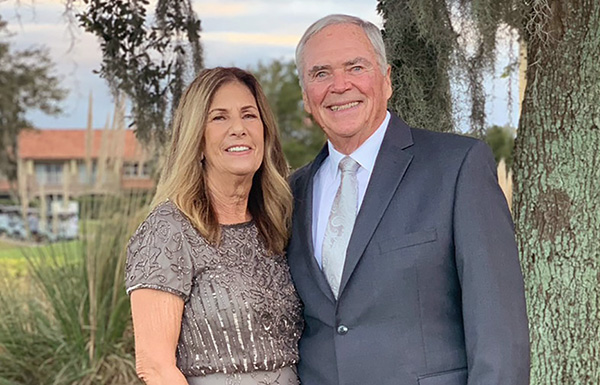Investigating Exercise’s Role in Nerve Regeneration

Our bodies are equipped with billions of peripheral nerves that signal everything we do, from sensing the world around us to moving our limbs. When traumatic injuries occur, these valuable nerves can suffer long-term or even permanent damage. However, they are incredibly resilient as they sometimes can grow back.
With funding support from a Catalyst Grant, a neurosurgeon at Cleveland Clinic is researching the link between nerve regeneration and exercise. When Megan Jack, MD, PhD, Associate Staff Surgeon in the Neurological Institute, is not performing vital nerve surgery, she is in the lab learning how patients’ healing can be improved in the future.
“We are heavily focusing on the differences in nerve pathways at a molecular level and how they generate proteins,” says Dr. Jack. “So, we hope to better understand how these various pathways are influenced by exercise within an injured nerve that is hopefully recovering.”
Patients treated by Dr. Jack often have severe cuts or stretch injuries, and their outcomes can vary. For some, the nerve damage is too extensive to allow for regeneration. Through her research, she aims to identify ways to leverage the mechanisms activated by exercise to enhance mobility and alleviate pain for her patients.
“The idea is to either turn on or turn off specific pathways with different medicines or small molecules to achieve regeneration and improve a patient’s recovery,” says Dr. Jack. “It could be something we even provide the patient at the time of surgery.” The Catalyst Grant enabled Dr. Jack to take a big step in gathering the data to better understand these pathways.
Catalyst Grants Are Funded by Donors
Catalyst Grants are funded annually by thousands of gifts of all sizes from donors. Through a competitive process, these one-time grants are awarded to the project proposals that show the most promise for making an impact within one year. Caregivers must report on their progress and return any unused funds. Dr. Jack was awarded $34,337.
The Catalyst Grant came at a critical juncture for Dr. Jack, enabling her to proceed with her research. She is now seeking to expand and continue her studies on a broader scale, and she credits the program with improving her chances of receiving external funding.
“I think the ultimate goal of any researcher at Cleveland Clinic is to impact patients’ lives,” says Dr. Jack. “The donors have a huge hand in that, and so they're working alongside us to help us achieve that goal.”
Quick Neurological Care When It Counts

Louis Klein is lucky his wife, Michele, recognized he was having symptoms of a stroke. As he was walking to the kitchen to get his coffee one morning he said he felt a tingling in the side of his face. When he pointed it out to Michele, she also noticed his face was drooping a little. He told her he had some numbness and thought he was having a TIA (transient ischemic attack or “mini-stroke”) and she called 911.
An ambulance took Louis to Cleveland Clinic Indian River Hospital, where paramedics and the emergency room physician initiated a stroke alert so that when Louis arrived, the stroke team was on hand and prepared. He immediately underwent advanced CT imaging, which showed a clot completely blocking the blood flow to the basilar artery, which provides blood to the base of the brain, says Ryan Dahlgren, MD, Director of Neuroendovascular Surgery at Indian River Hospital.
“Should this area of the brain die, this is a non-survivable stroke,” Dr. Dahlgren says, who was part of the team who treated Louis.
Louis was taken into the neuroendovascular surgical suite. There, the stroke team performed a procedure that removed the clot, opened the blood vessel and restored blood flow “within 12 minutes flat,” Dr. Dahlgren says.
Michele, who had been worried if Louis would be able to walk or talk if he survived at all, was relieved when Dr. Dahlgren came back after 15 minutes to tell her everything went well.
“The Cleveland Clinic stroke team members were all very quick, very efficient. The teamwork was amazing,” Michele says. “It’s a miracle that he is alive.”
Philanthropic Support Makes a Difference
Thanks to generous support from the community, the Scully Interventional Neurology Suite at Cleveland Clinic Indian River Hospital is one of the few facilities in the region offering sophisticated neurological care. The stroke center treats neurological disorders and brain tumors, in addition to specializing in mechanical thrombectomy.
"Time is everything in a stroke, and technology such as the neuro endovascular biplane surgical suite and the advanced CT allows us to diagnose and treat patients with speed and precision,” says Dr. Dahlgren. “This results in faster neuro endovascular surgeries, reduced brain damage, and ultimately, more lives saved. For our patients and their families, it's the difference between disability and recovery, between loss and hope."
Grateful for Lifesaving Treatment
Louis woke up in the intensive care unit and was happy to be able to stand, move, walk, talk and laugh. About two days later he was discharged from the hospital.
“I feel absolutely fantastic. I couldn’t believe I feel this good,” Louis says.
He has no ongoing motion or speech issues and is happy to once again be enjoying life—and his grandchildren.
“Dr. Dahlgren and his team are amazing,” Louis says. “Every time I hug him, I get teary-eyed. I’m blessed to be alive.”

